BIODIVERSITY PROTECTION
More than just a zoo — how Pretoria’s National Zoological Gardens is evolving
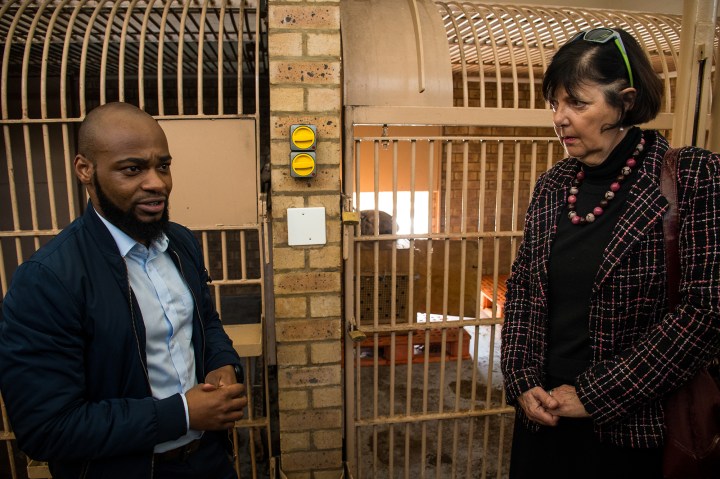
‘We’re trying to get away from the freak show concept of a zoo, to a facility that’s helping us with our broader battle for conservation and biodiversity protection,’ said Forestry, Fisheries and Environment Minister Barbara Creecy on the transformation of the National Zoological Gardens.
‘I think that across the world, you are seeing a movement where there is less appetite for viewing animals in captivity, and a greater appetite to see animals in national parks,” said Minister of Forestry, Fisheries and Environment Barbara Creecy during her visit to the National Zoological Gardens in Pretoria.
“So the question then becomes: what is the long-term future of a very important facility like this?”
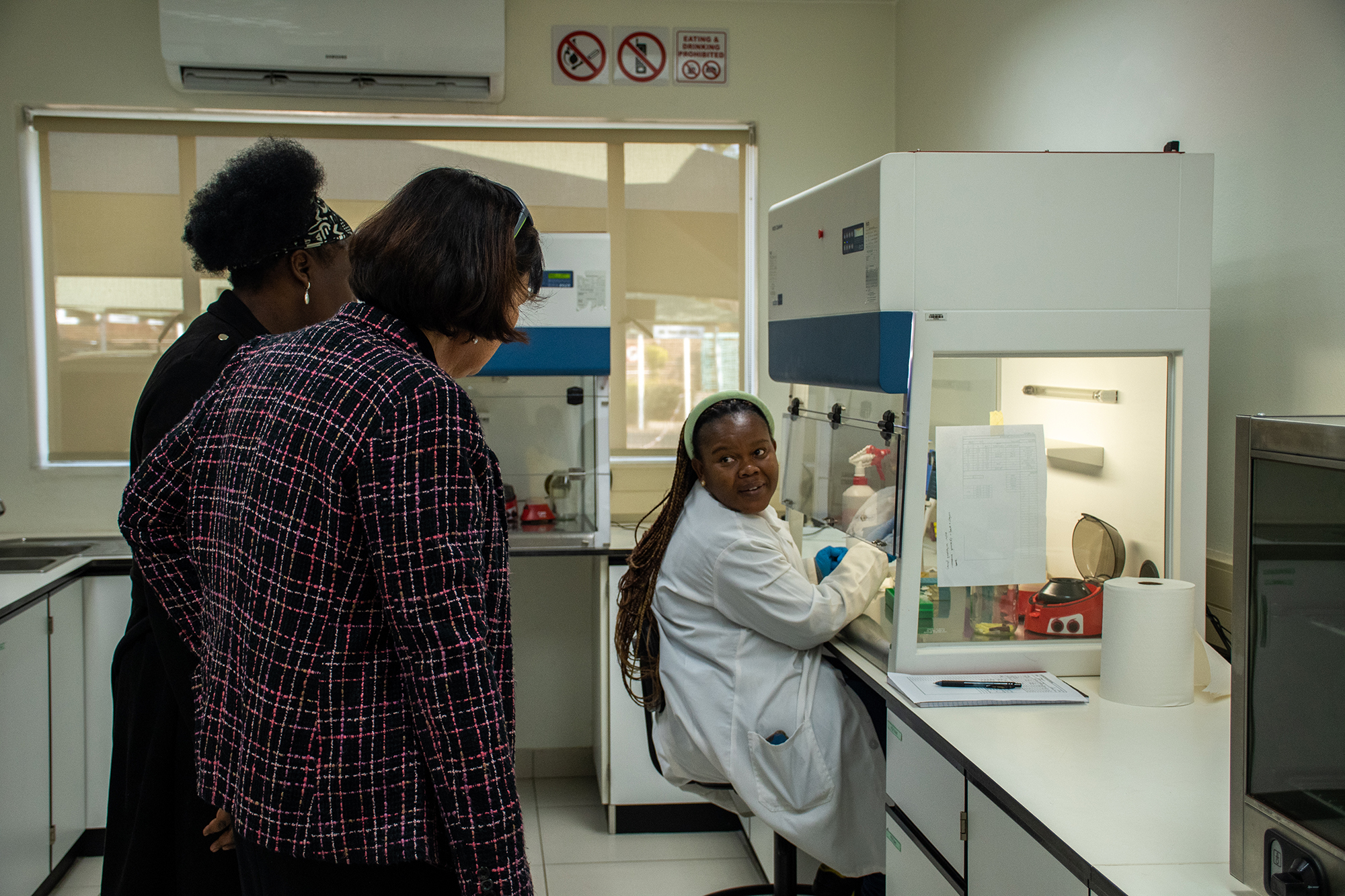
Minister Barbara Creecy watching PhD student Katlego Matlou (right) preparing a mixture of reagents used to amplify DNA in a process called Polymerase Chain Reaction. (Photo: Julia Evans)
Creecy answered that there would still be an “edutainment” component — for many children from urban areas a zoo is their only chance to see animals, and it is important to teach children about conservation and biodiversity issues.
“But you can also see that we are wanting to be using this facility as the site of important scientific research and important work that backs up the battle we are waging to conserve animals in the face of climate change, biodiversity loss and environmental pollution… and our battle against wildlife crime.”
Creecy was joined by board members of the South African National Biodiversity Institute (Sanbi), on a tour of Sanbi’s foundational research and scientific services, which include genetics and DNA profiling, veterinary services and the Biobank facility, which contributes to biodiversity information, species conservation, biodiversity and health, the wildlife economy and combating wildlife crime.
Conservation laboratories
The first stop on the tour was the Centre for Conservation Science laboratories, which are used for the development of marker-based systems to advance genomic research.
Sanbi and University of Pretoria PhD student Ditiro Moloto are investigating the decline of South African endemic larks, looking at factors such as life-history traits, habitat, climate change and genetic diversity. Moloto is using DNA sequencing to investigate the genetic diversity of these species.
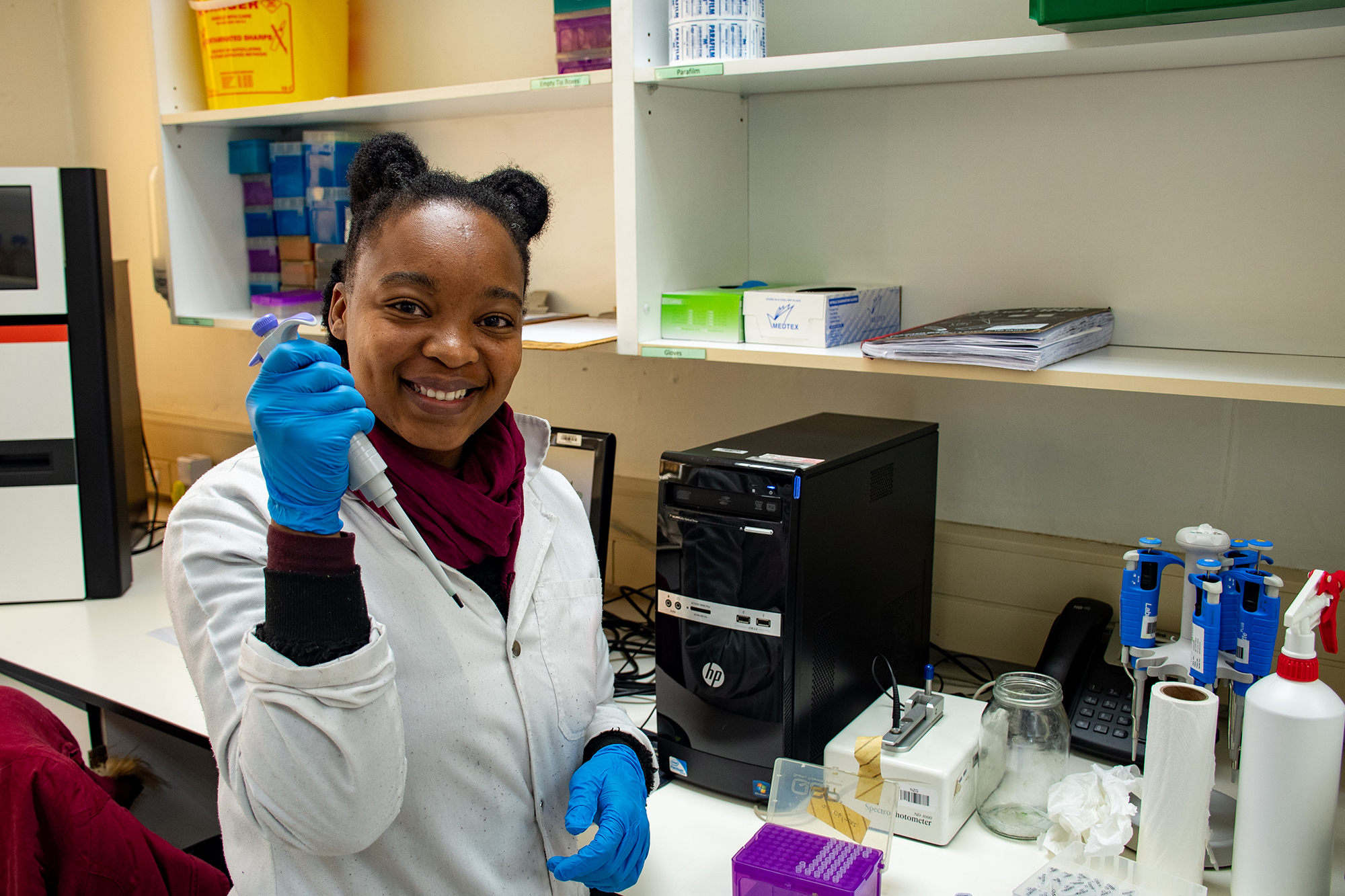
SANBI and University of Pretoria PhD student Ditiro Moloto verifying the quality of DNA from endemic lark species samples in the SANBI Research Gel Electrophoresis laboratory. (Photo: Julia Evans)
“In terms of climate change, I want to know how they [larks] will be affected,” said Moloto. “Because all of the biomes in South Africa are vulnerable at this point — particularly the Grassland and the Karoo.”
Moloto explained that climate change is moving the larks’ biomes (suitable habitats) to the poles, and he wants to see how that will affect the distribution of the birds.
“As we are confronting issues such as climate change, we’re finding that a whole range of species in their natural habitat is under threat,” said Creecy.
Visit Daily Maverick’s home page for more news, analysis and investigations
“And part of what we’ve got to start to understand is how are rising temperatures [and] extreme weather events impacting on species in the wild? And what scientific and conservation interventions can we take so that we can help to promote species’ resilience?
“There is a growing interface between the natural and physical sciences and the IT world,” said Creecy, mentioning how labs are using artificial intelligence to analyse big data-sets
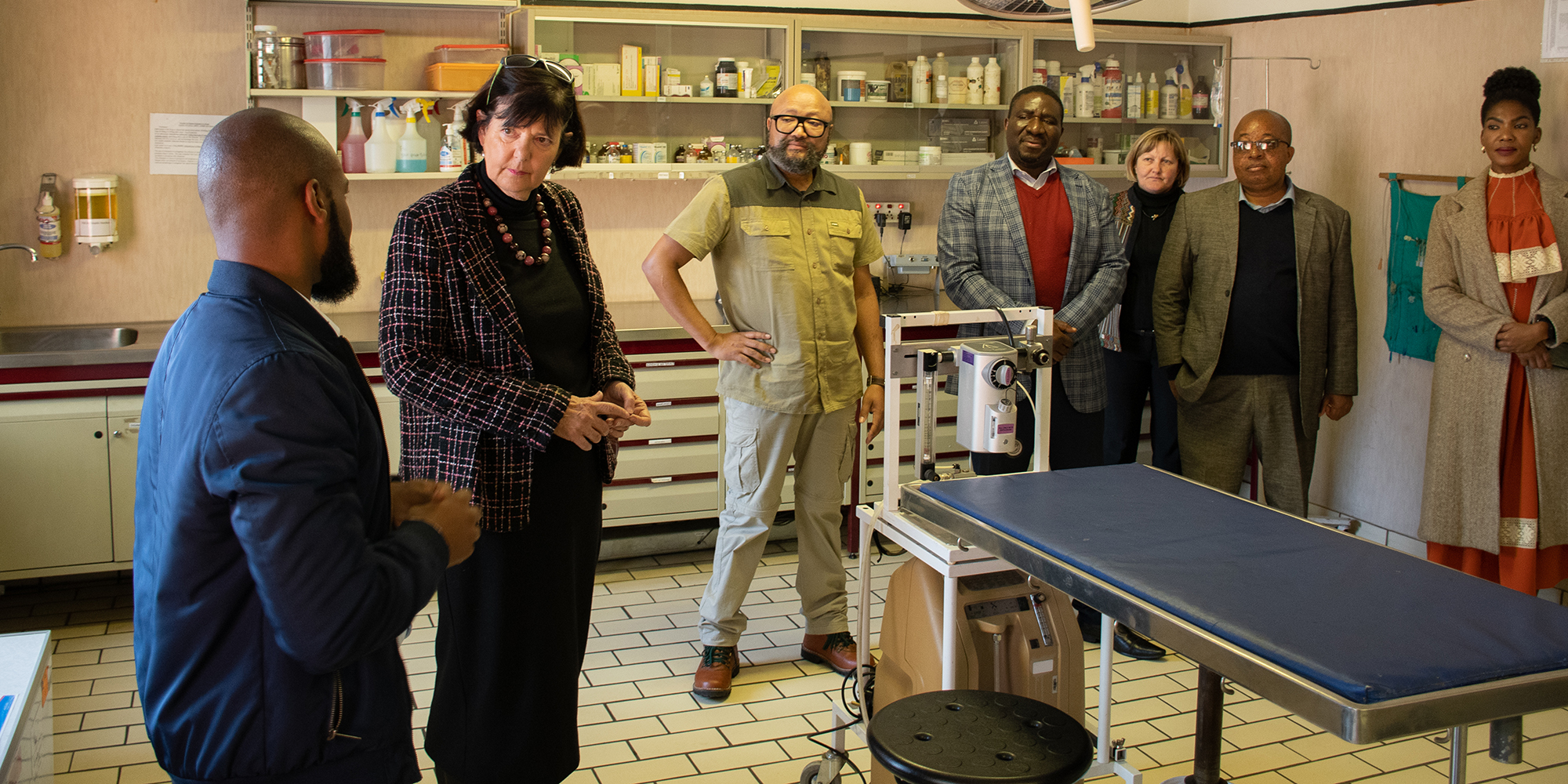
Dr Terrence Thovhakale, veterinarian at the National Zoological Gardens, (left) with Minister Barbara Creecy (second left) in an examination room at the Animal Hospital. (Photo: Julia Evans)
Conservation biologist Mafanela Clearance Mnisi told Daily Maverick that they have two forms of computing in their labs. One is in-house, their own server which stores their data, called a centre for high-performance computing, and one is an external server.
Mnisi uses next-generation sequencing to generate millions of base pairs of DNA of a frog species, data that are so large they can’t be screened on a regular computer, so he imports data remotely to their in-house server.
Genetics Services Unit and illegal wildlife trade
The Genetics Services Unit, established in 2020, focuses on the regulation and enforcement of legal trade and combating illegal trade in wildlife and has analysed more than 2,000 samples. The unit regulates the legal wildlife trade by creating DNA passports that can be used for exporting and trading the animals.
It created more than 500 cheetah passports and through the implementation of this monitoring system, there was a drastic decline in the illegal trade of cheetahs in South Africa.
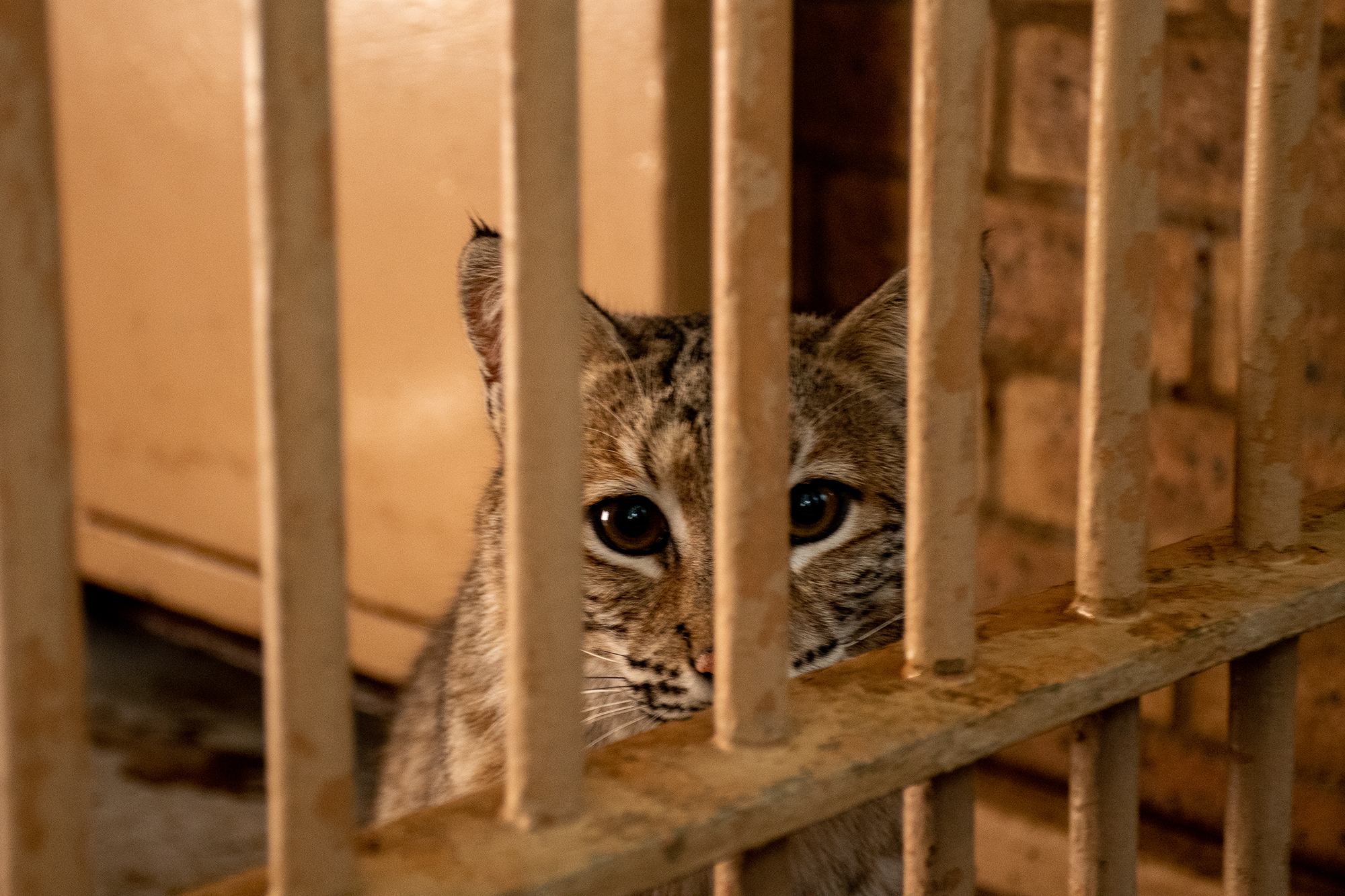
An illegally traded South American bobcat is held in an enclosure at the Animal Hospital at the National Zoological Gardens in Pretoria. (Photo: Julia Evans)
The unit helps to combat illegal trade in wildlife by providing a forensic or DNA analysis service to the South African Police Service (SAPS) and the Department of Forestries, Fisheries and the Environment (DFFE).
Creecy said they are using the huge biological database to back up forensic work in their battle against organised crime.
After the police confiscate animals they suspect are being illegally traded, the animals have to go somewhere while the case is ongoing.
“Part of what we are wanting to do with the zoo is to reposition it to be a place where you can keep specimens,” said Creecy. “And then you would have to look at possibilities for rehabilitation after the cases are over.”
The minister also visited the animal hospital and veterinary unit, which handles animal operations and postmortems, and where confiscated animals are temporarily hosted while court cases are under way. DM/OBP



















 Become an Insider
Become an Insider
Comments - Please login in order to comment.